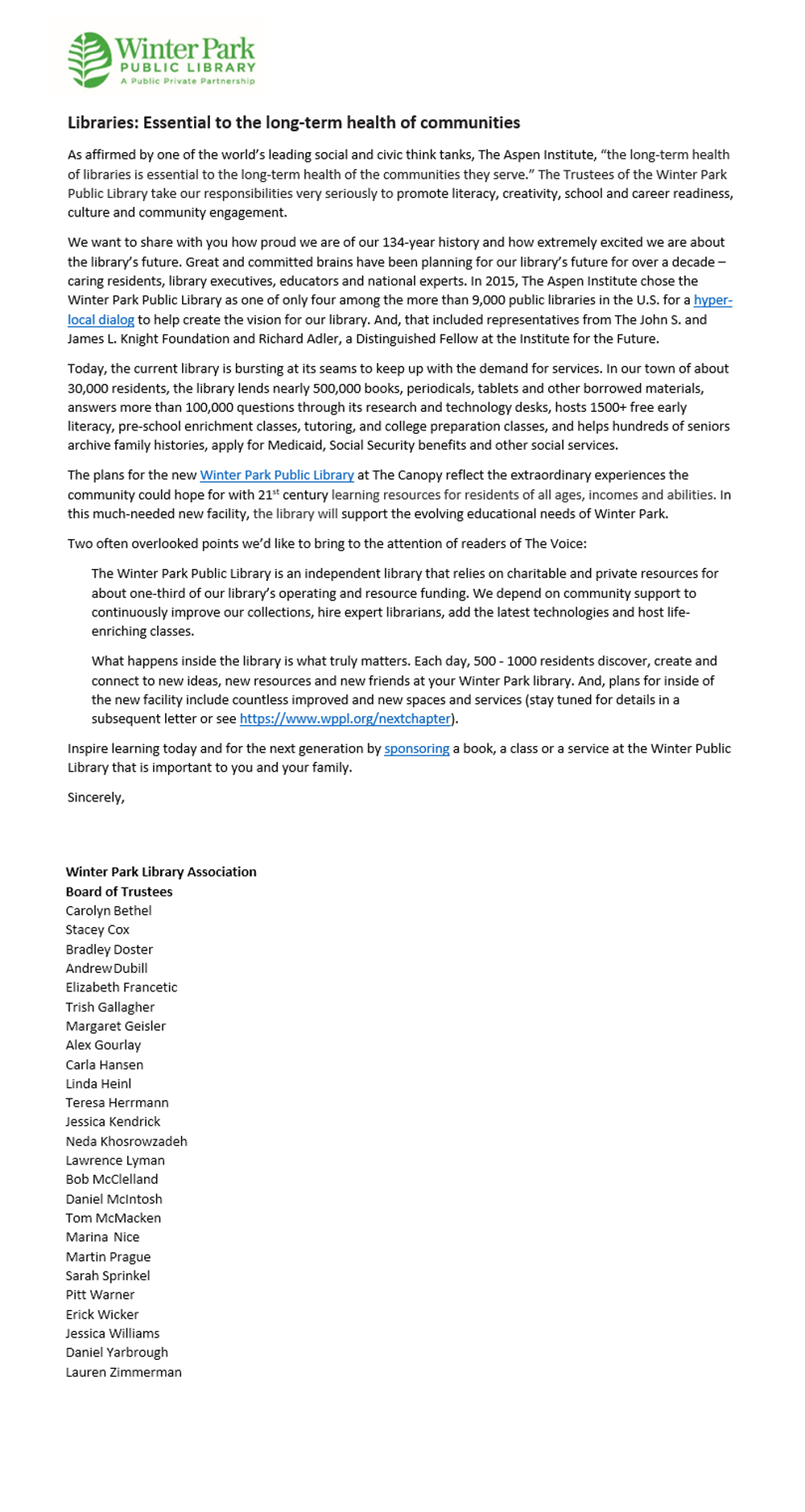Orange Avenue on Track to Become Hot Spot
Orange Avenue on Track to Become Hot Spot
December 5, 2019 / by Geri Throne
A 40,000-square-foot lakefront home proposed for Palmer Avenue—the biggest home ever in the city—is garnering the most attention outside Winter Park. But residents who crowded a city planning and zoning board meeting Tuesday had an even bigger issue on their minds: a rezoning plan to convert North Orange Avenue into the city’s next intensely developed hot spot.
After a long line of residents spoke for and against the rezoning proposal, members of the advisory board all voiced their enthusiastic support. They agreed that benefits would outweigh any negatives and voted unanimously to recommend the proposal to the city commission.
City commissioners will consider the rezoning plan at its Jan. 13 meeting.
Planning jargon aside…
Despite use of planning jargon such as “overlay district” and “placemaking” at Tuesday’s hearing, the issues surrounding the proposed Orange Avenue district boil down to familiar zoning concerns: Is growth “inevitable” in Winter Park, and if it is, how much development should be packed into an area? How high should buildings be allowed? How much extra traffic should be created? How well would new construction mesh with existing structures?
City Planning Director Bronce Stephenson said a flexible mixed-use overlay is the best way to deal with the avenue’s future growth. He defended the months-long process the city went through to arrive at the proposal, noting that residents were involved early on. An 11-member appointed steering committee, made up of people with broad ranges of opinion about development, participated in the recommendations.
“Despite what has been reported [in social media], the small-scale character of Orange Avenue has been promoted and protected throughout the process to the highest extent possible,” Stephenson said.
Residents concerned about the new zoning district, however, were not convinced. They asked the planning board for more time to digest the thick packet explaining the proposal. They noted the potential for congestion, more traffic and buildings as tall as five and seven stories within the district.
Although the number of residential units in the district would stay the same, total development in the proposed district would become more intense. Under current zoning, almost 1.9 million square feet of development is possible in the district. With the new district zoning, the total square footage possible would climb to more than 2.6 million.
The debate…
The benefit, Stephenson said, would be a mixed-use plan that would improve the area visually, attract more visitors, and cure what the city sees as “economic stagnation” on Orange Avenue from Fairbanks Avenue to US 17-92. Some other pluses he cited: wider, safer sidewalks; more open space; connection with nearby Mead Botanical Gardens, and parking garages set back behind buildings. Design standards would ensure that new structures would be attractive and compatible with neighboring buildings.
Existing zoning also would allow more development, he said, and perhaps not what residents might desire. Without new and creative zoning, he warned, a Wal-Mart-sized structure could be built with a huge paved parking lot.
Some residents, however, worried that the plan didn’t do enough to honor the city’s stated commitment to cherish “its traditional scale and charm.” Resident Bart Johnson said that exceptions to that goal in most of the proposed district were big enough for a developer to “drive a truck through.”
“Citizens need more time to fully understand the implications” of the lengthy new ordinance, pleaded resident Pat McDonald, a concern echoed by other residents.
Frank Hamner, an attorney representing the Holler family, a major property owner in the area, criticized calls for further delay as having “a different purpose” than stated. Residents had ample time to attend the numerous public meetings about the proposal, he said. Their calls for more time were “a distraction” to “delay for delay’s purposes.” Hamner also accused unidentified people of posting online anonymously and knocking on doors “spreading lies” about the plan. Those people should “come up out of the sewer,” and make their case face to face, he said.
Traffic worries
Stephenson downplayed traffic worries. The planning director stressed that the overlay is a “framework” or starting point, which must be approved before a traffic study can be done. He also cited a state study that found few drivers stopped on Orange Avenue as a destination. He described it as a “cut through” road.
That four-lane stretch of North Orange Avenue is no shortcut, however. It serves as an arterial road in Winter Park, connecting Winter Park commuters to State Road 527 and US 17-92 and helping them get from one side of the city to the other. Traffic accidents on that stretch are frequent, city statistics show. Until a traffic study is conducted, it remains unknown how traffic safety, street parking and traffic flow will be juggled under the proposed design.
Left unknown…
Undecided in the proposed ordinance is the fate of Progress Point, an odd-shaped, city-owned parcel at the intersections of Orange Avenue and Denning Drive. The steering committee could not agree how the lot should be used or whether the city should sell it. Sheila Deciccio, a member of that steering committee, urged that the city keep the land, which might help solve area stormwater and parking problems. The site is “one of the jewels we have left,” she said.
Also unknown, but probably not in doubt, is an unrelated agenda item—the fate of the massive 40,093-square-foot home that real-estate developer Marc Hagle wants to build on Lake Osceola. The planning and zoning board tabled its vote until next month after some board members and two neighbors raised questions about a proposed setback.










Recent Comments